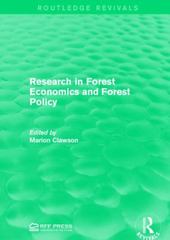Question
You will find quarterly data on real GDP, employment, and average labor productivity for the past two recessions. For both cases, the data starts the
You will find quarterly data on real GDP, employment, and average labor productivity for the past two recessions. For both cases, the data starts the quarter before the onset of the recession and then ends seven quarters later as that is the last quarter for which there is data for the COVID Recession. Thus, for the Great Recession the data runs from the fourth quarter of 2007 (2007-10-01) through the third quarter of 2009 (2009-07-01) and for the COVID Recession the data runs from the fourth quarter of 2019 (2019-10-01) through the third quarter of 2021 (2021-07-01). The data are provided as indexes since you will be creating figures similar to Figures 11.32 through 11.34, but now to compare behavior across the Great Recession and the COVID Recession.
a. Create a plot that shows the index values for real GDP for both recessions. You can use the numbers provided under Quarters after Start of Recession for the values to report on the horizontal axis. Do the same for the index values for employment and for average labor productivity.
b. Based upon your plots, which recession experienced the deepest decline in real GDP and which recession experienced the quickest recovery back towards its value prior to the start of the recession? Briefly explain your reasoning.
c. Based upon your plots, which recession experienced the deepest decline in employment and which recession experienced the quickest recovery back towards its value prior to the start of the recession? Briefly explain your reasoning. d. Based upon your plots, which recession experienced the deepest decline in average labor productivity and which recession experienced the quickest recovery back towards its value prior to the start of the recession? Briefly explain your reasoning
| Y | N | Y/N | Quarters after Start of Recession | ||||||||||
| 2007-10-01 | 100 | 2007-10-01 | 100 | 2007-10-01 | 100 | 0 | |||||||
| 2008-01-01 | 99.4252 | 2008-01-01 | 99.55091 | 2008-01-01 | 99.87372 | 1 | |||||||
| 2008-04-01 | 99.93846 | 2008-04-01 | 98.74228 | 2008-04-01 | 101.2114 | 2 | |||||||
| 2008-07-01 | 99.39728 | 2008-07-01 | 96.96695 | 2008-07-01 | 102.5064 | 3 | |||||||
| 2008-10-01 | 97.24654 | 2008-10-01 | 96.14781 | 2008-10-01 | 101.1428 | 4 | |||||||
| 2009-01-01 | 96.15468 | 2009-01-01 | 95.5306 | 2009-01-01 | 100.6533 | 5 | |||||||
| 2009-04-01 | 96.01637 | 2009-04-01 | 94.82088 | 2009-04-01 | 101.2608 | 6 | |||||||
| 2009-07-01 | 96.36594 | 2009-07-01 | 94.97301 | 2009-07-01 | 101.4667 | 7 | |||||||
| Y | N | Y/N | |||||||||||
| 2019-10-01 | 100 | 2019-10-01 | 100 | 2019-10-01 | 100 | ||||||||
| 2020-01-01 | 98.69642 | 2020-01-01 | 99.43149 | 2020-01-01 | 99.26072 | ||||||||
| 2020-04-01 | 89.87567 | 2020-04-01 | 86.76768 | 2020-04-01 | 103.582 | ||||||||
| 2020-07-01 | 96.65907 | 2020-07-01 | 92.2135 | 2020-07-01 | 104.821 | ||||||||
| 2020-10-01 | 97.73708 | 2020-10-01 | 94.46567 | 2020-10-01 | 103.4631 | ||||||||
| 2021-01-01 | 99.23626 | 2021-01-01 | 94.84621 | 2021-01-01 | 104.6286 | ||||||||
| 2021-04-01 | 100.8645 | 2021-04-01 | 95.53583 | 2021-04-01 | 105.5777 | ||||||||
| 2021-07-01 | 101.369 | 2021-07-01 | 96.60409 | 2021-07-01 | 104.9324 |
Step by Step Solution
There are 3 Steps involved in it
Step: 1

Get Instant Access to Expert-Tailored Solutions
See step-by-step solutions with expert insights and AI powered tools for academic success
Step: 2

Step: 3

Ace Your Homework with AI
Get the answers you need in no time with our AI-driven, step-by-step assistance
Get Started


